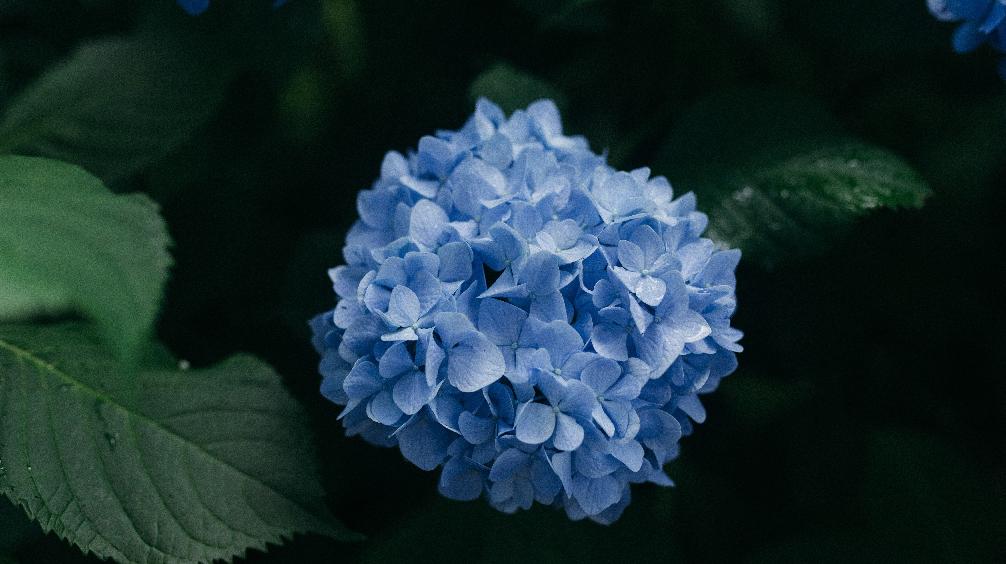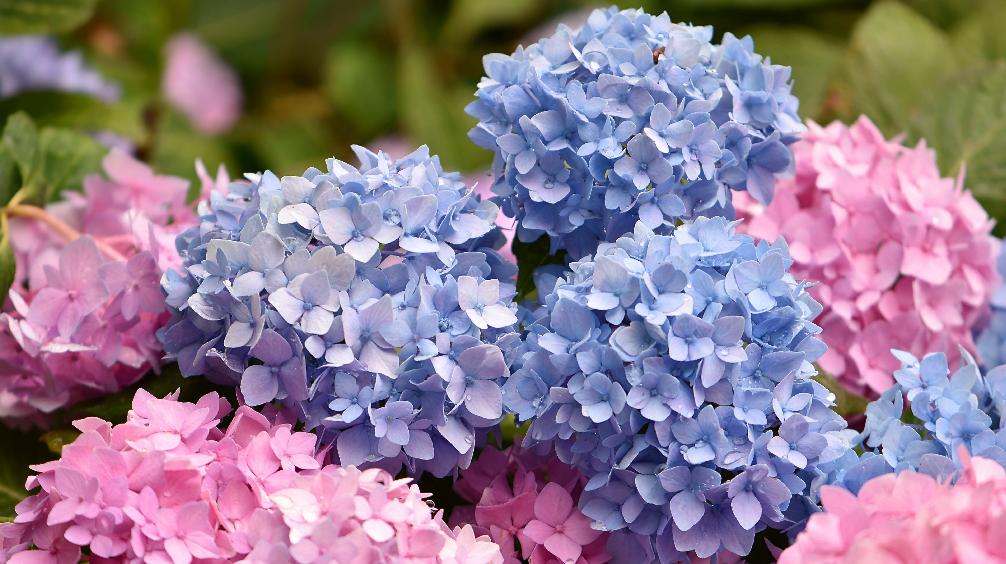Growing Hydrangeas in Texas
The Best Hydrangea Varieties for Growing in Texas
Planting Hydrangeas in Texas
Watering Hydrangeas Growing in Texas
Other Care Tips for Growing Hydrangeas in Texa
Lots of Houston gardeners assume that growing hydrangeas in Texas is impossible. To be fair, hydrangeas have earned themselves a bit of a reputation. Kinda like Diana Ross, they’re temperamental and a bit dramatic, but they make up for their finicky ways with impressive, showy displays, and undeniable beauty. While not all hydrangeas are cut out for the hot Houston sunshine, there are certainly a few that can thrive in our climate, and some of the trickier varieties can still grow well here if planted in ideal conditions. Here’s how you can get those ultra-fabulous flowering shrubs to steal the spotlight and live their best life here in Texas:

The Best Hydrangea Varieties for Growing in Texas
There are several different cultivars of hydrangea shrubs, in a fabulous spectrum of colors and all different shapes and sizes. While some hydrangeas won’t take kindly to our intense Texas heat, there are certainly a few kinds that thrive in the Southern comfort of Texas.
Oakleaf Hydrangeas are definitely the most popular kind in our region, as they can tolerate heat without getting too fatigued. They don’t look exactly like the typical hydrangeas with globe-shaped clusters of blooms that often grace the cover of home and garden magazines. Oakleaf hydrangeas kind of look like a cross between a hydrangea and a lilac, because their little white flowers form panicles— cone-shaped clusters that cascade downwards. Their lobed leaves, as you can probably guess by the name, look a lot like oak tree leaves. As the flowers mature, they transition from milky white to soft pink, and sometimes take on a wine-red tint before the plant goes dormant for the winter. At full size, oakleaf hydrangeas can range anywhere from 4-7 feet tall.
PeeGee Hydrangeas are another gorgeous variety that does well in Texas. They’re total attention-grabbers, with massive, cloud-like bunches of blooms reaching heights as high as 15 feet! You can even train these shrubs into a tree shape, so they make a great accent plant for the front yard. Similarly to the oakleaf hydrangea, PeeGees start out with white blooms with a soft green tint and slowly turn more pink as they mature.
French Hydrangeas are the classic cultivar you’ve seen in countless wedding bouquets. Their rounded, “mophead” flowers come in so many beautiful shades of white, green, purple, pink, and blue. You can even pull a Sleeping Beauty and change them from pink to blue, or blue to pink, by playing around with the pH and Aluminum levels of the soil with different amendments. While these hydrangeas are wildly popular in more Northern regions of the US, they’re definitely trickier to keep happy here in Houston, however, it can be done with due diligence. If your heart is set on a garden full of dramatic, icy blue blossoms, you can make it happen— just make extra sure they’re getting everything they need to stay comfortable.

Planting Hydrangeas in Texas
The most important thing to keep in mind when deciding on a location to plant your hydrangeas is the fact that they don’t like too much direct sun. Ideally, they love a bit of sunshine in the morning, followed by some cool shade for the rest of the day. By this logic, the best place to plant a hydrangea is on the East side of your home. This way, the morning sun will hit them, but by noon when it’s at its brightest, your house will be throwing some shade over those hydrangeas!
If your East wall doesn’t have much free space alongside it, another good alternative would be underneath the dappled shade of a tree canopy. As the branches move around in the breeze, little pockets of sunshine will reach your hydrangeas, but they’ll still stay nice and cool.
Once you’ve picked out a spot for your new shrub, you’ll want to make sure the soil is in good shape. If it’s too sandy or too heavy and clay-based, your hydrangea might end up throwing a bit of a diva fit. Make sure lots of organic matter has been mixed into your soil (Natures Way Leaf Mold is great) to help improve drainage and load it up with vital nutrients. The best time to plant a hydrangea is during mild weather— nothing too hot, too cold, or too stormy. Pick a clear day in spring or fall to plant your shrub, and it will have enough time to get settled before it has to tough out the hotter days ahead.


Watering Hydrangeas Growing in Texas
Once your shrub is in place, you’re going to want to water it pretty much daily for the next 3 weeks. This will help its roots get established, so it’s ready to grow bigger and stronger with each passing year. After that, watering every couple of days during the hotter months, and once a week during the cooler months should suffice.
Hydrangeas love lots of water, but they don’t like soggy, waterlogged soil, which is why good soil drainage is so important. When watering, aim for the base of the plant— not the flowers or leaves, because if moisture gets trapped in some of the dense, shaded areas of foliage, the area could get overtaken by mildew, which is less than fabulous.

Other Care Tips for Growing Hydrangeas in Texas
Applying a layer of mulch around the base of your shrubs will also help them to stay hydrated in our Texas heat. Mulch blocks the sun from drying up the soil, effectively locking in that precious moisture and keeping the plant’s roots cool. Plus, it helps keep weeds away, and as it naturally decomposes, it delivers an extra dose of nutrients and healthy bacteria into the soil.
A bit of fertilizer will also help your hydrangeas to bloom to their fullest potential. Applying a slow-release fertilizer sometime around April or early May will produce some pretty sweet results. Fertilizers with higher levels of phosphorus (the middle number in the NPK ratio) are best, because phosphorus has a beautifying effect on flowers—sort of like those vitamin gummy bears the Kardashians sell to make your hair grow thick and shiny.
To make sure you don’t end up nipping off any flower buds, never prune your hydrangeas in the fall. It’s tempting to do when all the flowers and leaves start to fall off for winter, but you’ll just end up with a flowerless bush the following year. If you need to prune your hydrangea, wait until after it has bloomed, and work around all the stuff you want to keep.
Growing hydrangeas in Texas is totally possible, you’ve just gotta meet their demands. Like Diana Ross, it may take some extra effort to keep this diva happy, but the show-stopping display is so worth going the extra mile. Visit us at our garden center, Plants for All Seasons, and we’ll help you get set up with a gorgeous hydrangea that will have you singing “Ain’t no shrubbery high enough!”

 Chanel earrings, CC earrings adorned with stones v42
Chanel earrings, CC earrings adorned with stones v42  Dior CD Disc-shaped Earrings 2023 Vintage Style for Women
Dior CD Disc-shaped Earrings 2023 Vintage Style for Women  Dior 2024 Women's Pearl Earrings
Dior 2024 Women's Pearl Earrings  Chanel earrings, CC earrings adorned with pearls v41
Chanel earrings, CC earrings adorned with pearls v41  Chanel earrings, CC dangle earrings in water drop shape adorned with stones and pearls v39
Chanel earrings, CC dangle earrings in water drop shape adorned with stones and pearls v39  Rolex Sea-Dweller 126603 Bi Colour
Rolex Sea-Dweller 126603 Bi Colour 